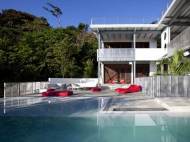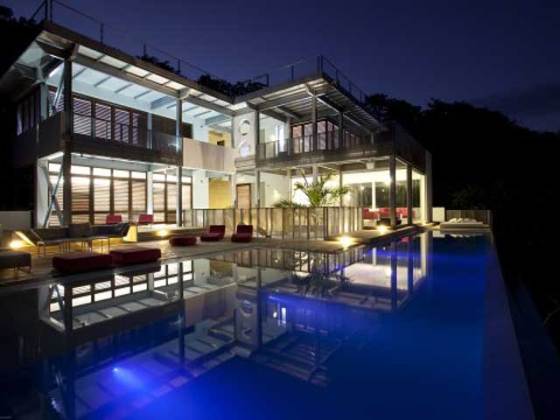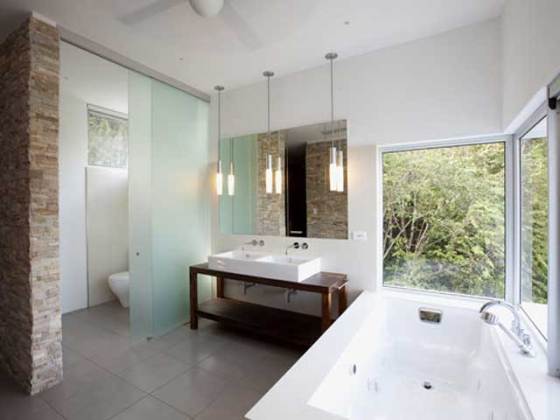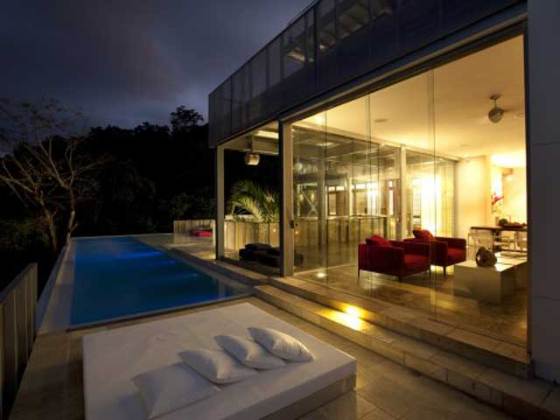Green architecture – Casa Torcida in Costa Rica
 SPG Architects transformed an abandoned steel frame and concrete slab structure into a five-level, 1,672 square meters (18,000 square feet), residence on a rain-forested mountainside of Osa Peninsula, Costa Rica. The dual concerns of accommodating the needs of the client and preserving the natural landscape shaped the design and construction process. Although it is a bit large, the house is environmentally sensitive and off-grid.
SPG Architects transformed an abandoned steel frame and concrete slab structure into a five-level, 1,672 square meters (18,000 square feet), residence on a rain-forested mountainside of Osa Peninsula, Costa Rica. The dual concerns of accommodating the needs of the client and preserving the natural landscape shaped the design and construction process. Although it is a bit large, the house is environmentally sensitive and off-grid.
With footings, frame, and slab already in place, the greatest impact on the rain-forested site, overlooking the Golfo Dulce, had already taken place before SPG Architects decided to finish the project in their way. The existing geometry required minor reconfiguration of the perimeter to improve the massing and use of the house. Sheer walls, bracing, and enhanced connections were required to reinforce the frame for seismic activity. Neither of these activities further degraded the site.
Further impact on the site was reduced by the decision to make the house self-sufficient in terms of energy and water use. This both eliminated the considerable expense of running electrical lines 18 kilometers (11.2 miles) from the nearest town and avoided the inevitable suburbanization of this sparsely populated coastal area that doing so would have risked. Upon completion, this house had the largest domestic solar array (18.4 kW) in Costa Rica, which provided enough energy for lighting, appliances, and miscellaneous equipment. In the future, this solar-derived power will also be used to power the needs of a complete and state-of-the-art recording studio, for which space has been designated at the ground level.
The solar panels, both photovoltaic and hot water, sit on a reflective and insulating, chemically inert and microbial-free, ceramic-based roof coating that both minimizes solar heat-gain and provides a clean source of water for the house and the pool. Roof water is collected in a 283,905-litre (75,000-gallon) cistern, precluding the need for well water and eliminating any impact on the water table.
No air-conditioning is required since natural cross breezes are exploited to maximize comfort in each room. The house incorporates movable and adjustable louvered and screened panels in each living space and movable glass walls that allow the rooms to fully open and enable the indoors to become completely merged with the outdoors.
Cabinetry was locally fabricated from trees originally harvested from the foundation area and all materials were locally sourced whenever possible. High-efficiency appliances, light fixtures, and plumbing fixtures all contribute to the environmentally responsible approach to co-existing with nature. Casa Torcida provides all the comforts that the client required, making it clear that a well-considered resource-responsible approach does not preclude a commodious design that is visually appealing and functionally uncompromised.












Leave your response!